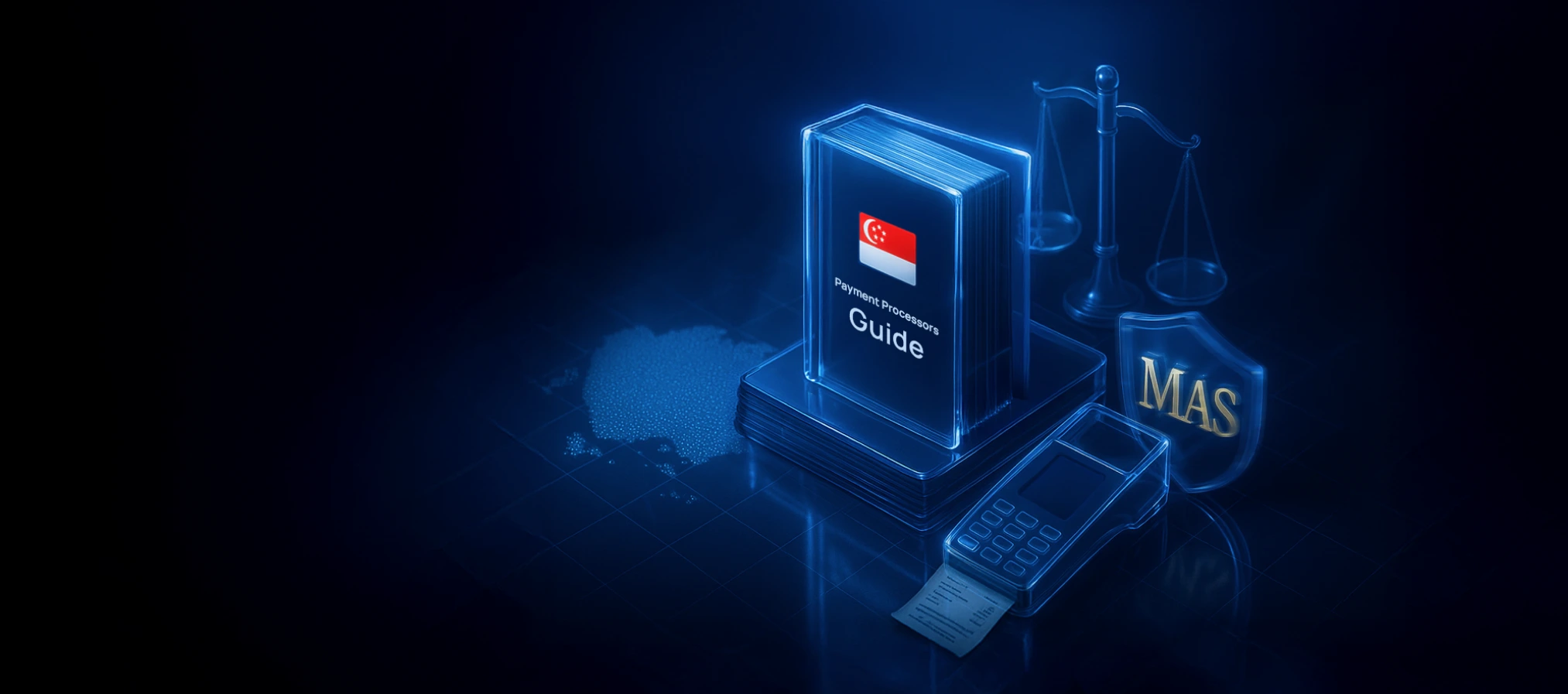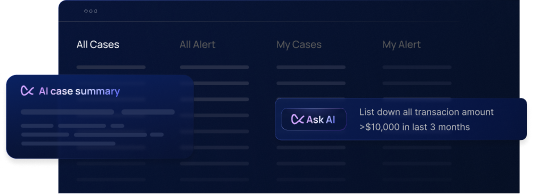In today’s financial crime compliance operations, teams are overwhelmed by volumes of alerts and labor-intensive processes. Traditional anti-money laundering (AML) workflows are notoriously inefficient, industry research finds false positives comprise over 95% of AML alerts and consume about 42% of compliance resources. This flood of “noise” forces compliance analysts to spend countless hours on low-value tasks, driving up operational costs. Fortunately, artificial intelligence (AI) is changing the game. AI-powered solutions like Flagright’s AI-native AML platform are slashing manual workloads, reducing headcount burdens, and cutting costs by automating key compliance workflows. Below, we explore how Flagright’s AI forensics tools for screening, transaction monitoring, and reporting deliver practical ROI by eliminating false positives, accelerating investigations, and streamlining reporting.
AML Screening: Eliminating False Positives and Alert Overload
One of the biggest strains on AML teams is screening alerts, hits from watchlists (sanctions, PEPs, adverse media) that are overwhelmingly false positives. Flagright’s AI Forensics for Screening tackles this problem head-on. Using specialized AI agents, the platform automatically sifts out irrelevant name matches and suppresses false positives, in many cases filtering out up to 93% of screening alerts. This means compliance analysts no longer have to review every fuzzy name match; the AI flags only genuinely suspicious hits for human attention. By automating Level-1 investigations, Flagright’s AI quickly checks details like dates of birth, locations, and contextual data to determine if an alert is a true match or a false alarm. The result is a dramatic reduction in alert volume and manual effort. Teams can focus on meaningful risks instead of drowning in redundant alerts.
Cutting these false positives has a direct impact on operational costs. Fewer noisy alerts translate to fewer analyst hours required and potentially a smaller team needed to handle screening. In fact, automating repetitive screening tasks significantly reduces manual workloads and operational expenses. Flagright’s AI runs 24/7 without fatigue, ensuring no alert goes unchecked even outside normal business hours. And because the AI follows the institution’s compliance policies and mimics human decision-making based on defined SOPs, it can consistently apply the same standards that a well-trained analyst would. Every AI decision comes with an explanation or disposition narrative, so there’s full transparency into why an alert was cleared, a critical factor for auditability. By shrinking alert queues and handling routine screening decisions in seconds, an AI-driven screening workflow not only saves costs, but also improves the team’s effectiveness and morale. Analysts are freed up to investigate truly suspicious cases instead of rubber-stamping false hits all day.
Transaction Monitoring Agents: Faster Investigations, Fewer False Alerts
Beyond screening, transaction monitoring (TM) generates large volumes of alerts that strain compliance operations. Rules-based monitoring systems often produce 90%+ false positives, leading to “alert fatigue” and excessive investigation workloads. Here, Flagright’s AI Forensics for Monitoring acts as a smart co-pilot for investigators. The AI agent can automatically triage alerts, perform initial analysis, and even close out low-risk cases, dramatically reducing the number of alerts that require human investigation. With AI handling the grunt work, financial crime teams have seen up to an 87% reduction in manual monitoring efforts, saving each analyst around 115 minutes per day that would have been spent on tedious alert reviews.
The efficiency gains are striking. Flagright reports that its AI agents enable institutions to investigate complex cases and alerts 90% faster on average. The AI rapidly gathers and analyzes customer data, builds pivot tables of related transactions, cross-checks risk indicators, and surfaces relevant contextual information within seconds. Instead of an analyst spending an hour piecing together data from various systems, the AI delivers an initial assessment almost instantly. Routine tasks like checking counterparties, summarizing account activity, or comparing an alert to historical patterns are automated by the AI 24/7, enabling round-the-clock alert resolution. This not only accelerates individual case investigations but also helps meet internal SLAs and regulatory deadlines by clearing backlogs faster.
Equally important, AI-driven monitoring improves the quality and consistency of investigations. The AI provides clear explanations and evidence for each alert, so analysts know why a rule was triggered and what data supports a decision. Such transparency makes it easier for brokerages and trusts to audit decisions and trust the AI’s recommendations. Analysts remain in the loop for high-risk or complex cases — the AI might highlight anomalies and suggest a next step, but a human makes the final call when needed. Over time, the system continuously learns from analyst feedback, refining its accuracy with each decision. Flagright’s AI adapts based on new data and the outcomes of past alerts, steadily improving its precision and further reducing false investigations. In short, AI monitoring agents cut out the noise, automate routine alert processing, and let your team concentrate on truly suspicious activity that warrants expertise. The payoff is not only cost savings in labor, but also faster interdiction of real threats due to less distraction from false alarms.
Automating SAR Narratives: Speeding Up Reporting and Documentation
Preparing regulatory reports and case documentation is another labor-intensive workflow in AML compliance. Writing a good suspicious activity report (SAR) narrative or case disposition can take analysts hours of meticulous work. Here is where Flagright’s AI truly shines by generating disposition narratives automatically, turning a time-consuming writing task into a matter of seconds. Flagright built its own privacy-first large language model (LLM) specifically to produce factual, regulator-ready investigation narratives. The AI can summarize an alert’s findings, evidence, and resolution into a well-structured narrative that meets compliance standards, ensuring the write-up is consistent, thorough, and free of subjective language. These AI-generated drafts dramatically reduce the burden on analysts when closing cases or filing SARs.
The efficiency gains in reporting are quantifiable. For example, one Flagright client saw a 75% reduction in time spent on case narratives after implementing AI-generated documentation. What used to require an hour of writing might now take 15 minutes or less for an analyst to review and tweak the AI’s draft. In some cases, teams can generate SAR and case narratives up to 90% faster using the Flagright AI assistant, accelerating the SAR filing process considerably. Faster reporting not only cuts labor hours, but also helps ensure regulatory deadlines for SAR submissions are easily met. Qualitatively, automating narrative writing leads to higher consistency and quality in reports, every alert gets a comprehensive narrative, and best practices are applied uniformly. This consistency is crucial: regulators often scrutinize the content of SAR narratives, and weak or generic explanations can raise red flags. By letting AI handle the first draft, compliance teams gain confidence that each case is documented with full detail and clarity, reducing the risk of errors or omissions that could be costly in audits. Overall, AI-generated narratives save significant time while improving the standard of documentation across the board.
Continuous Learning and Ongoing Improvement
A critical advantage of deploying AI in these workflows is that the system continuously learns and improves through a feedback loop with human analysts. Flagright’s platform is AI-native, meaning its models are designed to refine their output based on real-world results and user input. As analysts review AI-generated decisions, whether it’s a suppressed screening alert or a drafted narrative, their confirmations or adjustments become feedback to the model. Flagright’s AI forensics agents adapt and refine based on new data and analyst feedback for sustained accuracy. In practical terms, this means your false positive reduction might improve from 93% to even higher levels over time as the AI learns the nuances of your customer base and risk appetite. Transaction monitoring models can retrain on newly identified patterns or emerging typologies, continuously closing gaps in detection. Even the narrative LLM learns from compliance officer edits, honing its writing style to better match your organization’s expectations.
This continuous learning framework ensures that ROI isn’t static, it grows over time. The longer you use an AI-enhanced compliance platform, the more tuned it becomes to your workflows, yielding even fewer false alerts and faster investigations. It’s a virtuous cycle: the AI makes fewer mistakes and more accurate calls, which further reduces manual intervention and saves more effort. Importantly, this doesn’t mean AI operates unchecked. Human expertise remains in the loop to handle edge cases and to provide governance over the AI’s decisions. But with each interaction, the AI-human partnership becomes stronger. For compliance leaders, this translates to a solution that not only addresses current pain points but also continuously evolves to meet new challenges, whether that’s a change in regulatory requirements or emerging financial crime tactics. The platform effectively institutionalizes your team’s knowledge, so even if you scale up business or face analyst turnover, the learned intelligence remains in the system. Such continuous improvement is a key qualitative benefit of an AI-driven approach, ensuring that efficiency gains and cost reductions are sustained in the long run.
ROI and Key Benefits: Faster, Affordable, and Better Compliance Ops
AI is delivering real, measurable returns in AML compliance software operations. By reducing manual workloads across screening, monitoring, and reporting, Flagright’s AI-driven workflows directly lower the cost of compliance. Many institutions are achieving a full return on investment within just a few months of deployment. Below are some of the key ROI metrics and qualitative benefits compliance teams are experiencing:
- Massive False Alert Reduction: Experience up to 93% fewer false positive alerts with our watchlist screening, freeing analysts from reviewing thousands of irrelevant alerts and allowing them to focus on genuine high-risk cases. This reduction in alert volume directly translates to lower labor hours and decreased headcount requirements for alert handling.
- Acceleration of Investigations: AI agents handle investigations and data gathering so that alerts can be resolved 90% faster on average. Faster case resolution means your team can easily meet internal SLAs and regulatory deadlines. Critical suspicious activities are addressed promptly rather than getting stuck in backlog queues, strengthening your overall risk management.
- Labor Savings and Cost Reduction: By automating routine monitoring tasks, organizations have cut 87% of manual effort in their transaction monitoring process. Each analyst can now manage a far greater alert load, some saving almost 2 hours per day of grunt work, allowing you to scale compliance coverage without proportional increases in headcount. In other words, you can “scale transaction volumes without scaling headcount”, a huge cost advantage as your business grows.
- Faster Reporting and Documentation: Compliance teams are completing SAR filings and case documentation in a fraction of the time. Automated narrative generation cuts writing time by 75% or more, ensuring reports are filed promptly. Not only does this reduce hours spent per case, but it also improves report quality. Every narrative is detailed and consistent, which enhances regulator confidence and eases audits (no more worrying if an analyst’s hurried write-up will pass muster).
- Improved Consistency and Auditability: AI systems apply the same rules and logic consistently, eliminating the variability that comes with human fatigue or subjectivity. Decisions, whether clearing an alert or escalating a case are accompanied by explanations and follow a standard procedure, providing a clear audit trail. This consistency and transparency mean fewer errors and easier reviews by auditors or regulators. Your compliance outcomes become more predictable and defensible.
- Higher Analyst Satisfaction, Lower Burnout: By offloading menial tasks to AI, you allow your human talent to engage in more analytical and rewarding work. Analysts spend time on truly complex investigations and strategic improvements rather than mind-numbing data entry or endless false alarms. This boost in job satisfaction can reduce turnover and fatigue. In turn, a more engaged team is likely to be more productive and vigilant.
In sum, the introduction of AI into AML workflows yields both quantitative ROI (fewer alerts, faster processes, lower costs) and qualitative advantages (speed, accuracy, consistency, and morale). These benefits reinforce each other: when mundane work drops and consistency rises, the quality of compliance improves, which can avert costly compliance lapses and fines. Meanwhile, the cost and time saved can be reallocated to value-adding activities like refining risk models or handling new business without compromising compliance.
Conclusion: AI is Now Essential for Scalable, Compliant Operations
What was once a manual, labor-heavy function can now be streamlined with intelligent automation. AI isn’t just a nice-to-have innovation in AML compliance, it has become essential for scalable and cost-effective operations. The numbers make the case: double-digit reductions in false positives, investigations completed in a fraction of the time, and substantial headcount cost savings, all while maintaining or improving compliance quality. In an environment where compliance demands are rising and skilled analysts are a limited (and expensive) resource, AI allows compliance leaders to break the trade-off between thoroughness and efficiency. By leveraging Flagright’s AI-native AML platform, teams can do more with less, monitoring more transactions and customers with fewer manual hours, and doing it faster and more consistently than ever before.
For AML compliance leaders and operations managers, the message is clear. AI-driven automation is no longer experimental, it’s a proven solution to reduce operational strain and maintain compliance excellence amid growing complexity. Adopting an AI-enhanced workflow means your institution can handle surging alert volumes or new regulatory requirements without linear increases in cost or personnel. It means your analysts can focus on truly important investigations, and your organization can stay a step ahead of financial criminals through speed and adaptability. The bottom line: embracing AI in compliance isn’t just about cutting costs; it’s about building a sustainable, scalable compliance program that can keep pace with the modern financial landscape.
Explore Flagright’s AI-native AML platform to see how these AI forensics capabilities can transform your compliance operations. By deploying AI to handle the heavy lifting in screening, monitoring, and reporting, you position your team to excel in both efficiency and effectiveness, a competitive advantage in today’s high-stakes compliance environment. AI has arrived as the key to reducing operational burden and cost in AML workflows, and those who leverage it will set the new standard for compliant, agile financial crime fighting.
About the Author
Joseph Ibitola leads global demand generation at Flagright, an AI-native transaction monitoring and AML compliance platform. He drives marketing strategy, campaigns, and growth initiatives that help financial institutions adopt stronger compliance frameworks and reduce fraud risk. With expertise spanning fraud prevention, AML compliance, and financial risk management, Joseph also develops thought leadership and educational resources that position Flagright as a trusted partner to the finance industry.




.svg)





















